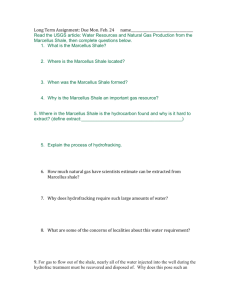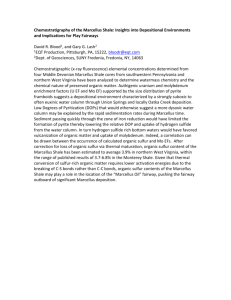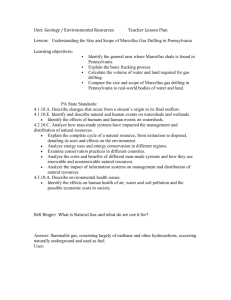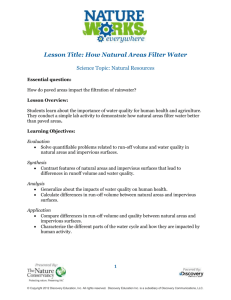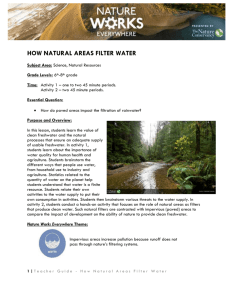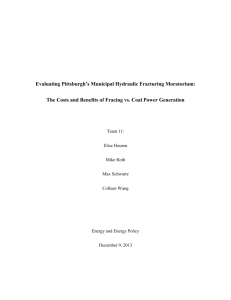shale eastern
advertisement
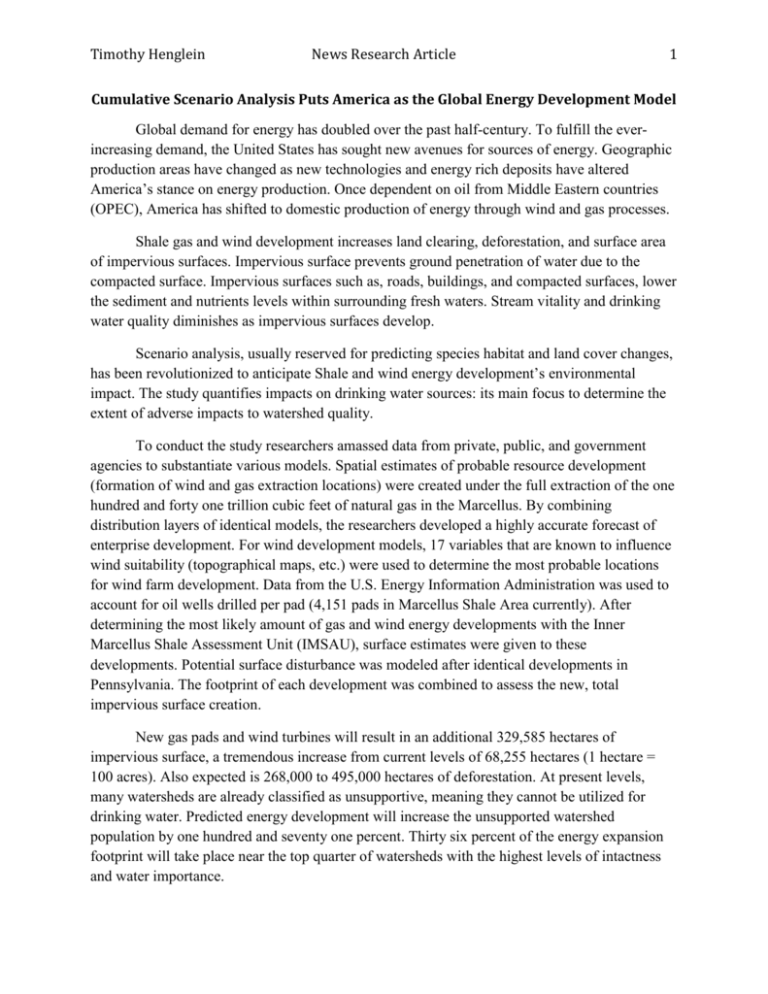
Timothy Henglein News Research Article 1 Cumulative Scenario Analysis Puts America as the Global Energy Development Model Global demand for energy has doubled over the past half-century. To fulfill the everincreasing demand, the United States has sought new avenues for sources of energy. Geographic production areas have changed as new technologies and energy rich deposits have altered America’s stance on energy production. Once dependent on oil from Middle Eastern countries (OPEC), America has shifted to domestic production of energy through wind and gas processes. Shale gas and wind development increases land clearing, deforestation, and surface area of impervious surfaces. Impervious surface prevents ground penetration of water due to the compacted surface. Impervious surfaces such as, roads, buildings, and compacted surfaces, lower the sediment and nutrients levels within surrounding fresh waters. Stream vitality and drinking water quality diminishes as impervious surfaces develop. Scenario analysis, usually reserved for predicting species habitat and land cover changes, has been revolutionized to anticipate Shale and wind energy development’s environmental impact. The study quantifies impacts on drinking water sources: its main focus to determine the extent of adverse impacts to watershed quality. To conduct the study researchers amassed data from private, public, and government agencies to substantiate various models. Spatial estimates of probable resource development (formation of wind and gas extraction locations) were created under the full extraction of the one hundred and forty one trillion cubic feet of natural gas in the Marcellus. By combining distribution layers of identical models, the researchers developed a highly accurate forecast of enterprise development. For wind development models, 17 variables that are known to influence wind suitability (topographical maps, etc.) were used to determine the most probable locations for wind farm development. Data from the U.S. Energy Information Administration was used to account for oil wells drilled per pad (4,151 pads in Marcellus Shale Area currently). After determining the most likely amount of gas and wind energy developments with the Inner Marcellus Shale Assessment Unit (IMSAU), surface estimates were given to these developments. Potential surface disturbance was modeled after identical developments in Pennsylvania. The footprint of each development was combined to assess the new, total impervious surface creation. New gas pads and wind turbines will result in an additional 329,585 hectares of impervious surface, a tremendous increase from current levels of 68,255 hectares (1 hectare = 100 acres). Also expected is 268,000 to 495,000 hectares of deforestation. At present levels, many watersheds are already classified as unsupportive, meaning they cannot be utilized for drinking water. Predicted energy development will increase the unsupported watershed population by one hundred and seventy one percent. Thirty six percent of the energy expansion footprint will take place near the top quarter of watersheds with the highest levels of intactness and water importance. Timothy Henglein News Research Article 2 A successful utilization of predictive patterns and impacts in the watersheds within the Marcellus Shale will serve as a global model for countries with similar shale deposits. Countries including China, Argentina, Australia, and Columbia have identified large shale deposits yet they are still in the planning stage. Understanding the cumulative affects of surface development from this study and others like it can help energy companies mitigate the inevitable consequences of development. Surface disturbance can impact the balance of biodiversity in aquatic systems and deteriorate water quality for all life forms, not just humans. In the Marcellus Shale area alone this equates to over 22 million affected Americans. New developments must take into account potential impacts to the direct and indirect elements maintaining ecosystem stability and urban wellbeing. Timothy Henglein News Research Article 3 References Evans JS, Kiesecker JM (2014) Shale Gas, Wind and Water: Assessing the Potential Cumulative Impacts of Energy Development on Ecosystem Services within the Marcellus Play. PLoS ONE 9(2): e89210. doi: 10.1371/journal.pone.0089210



